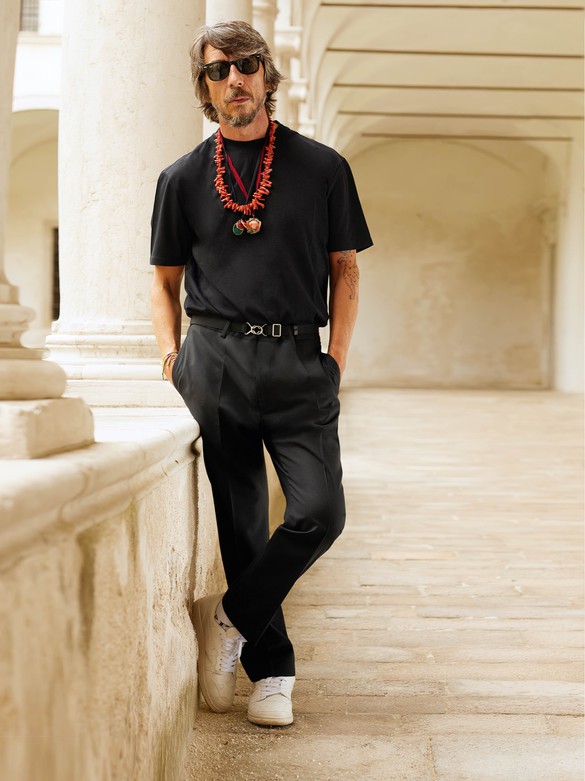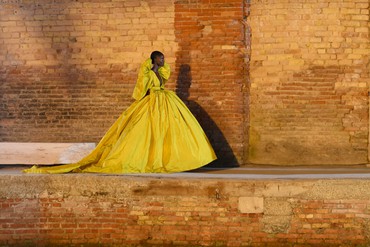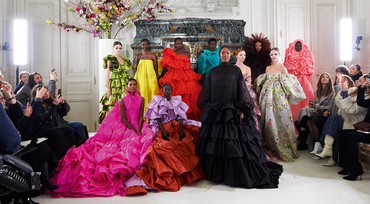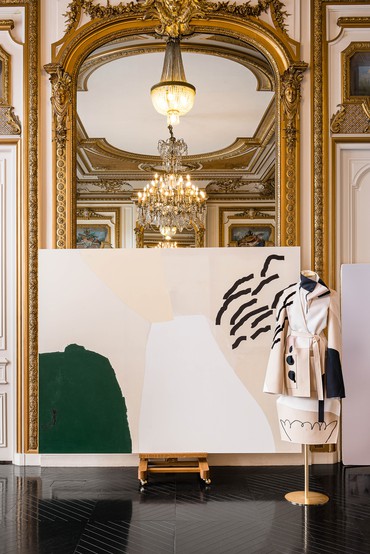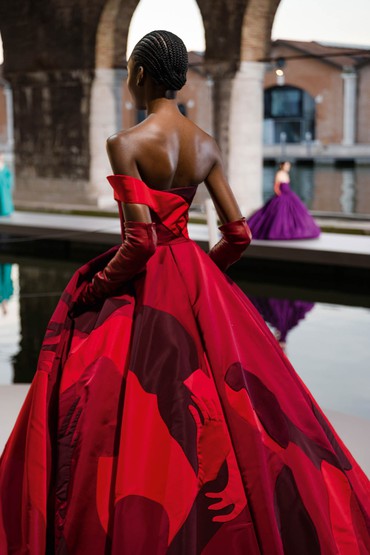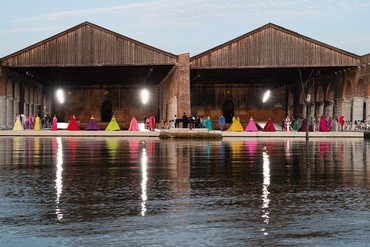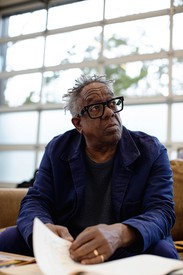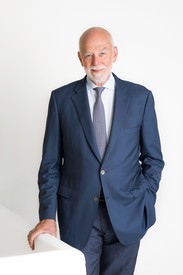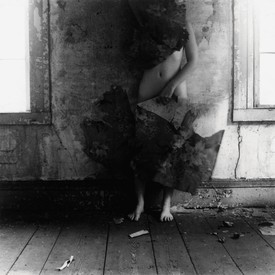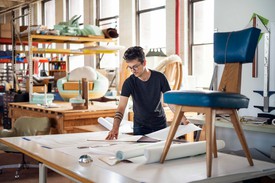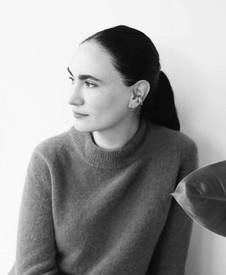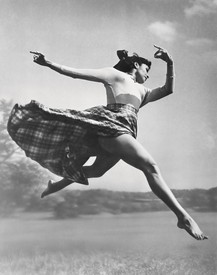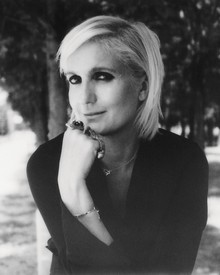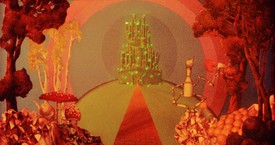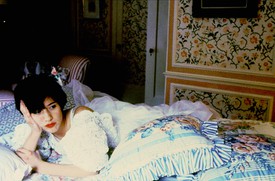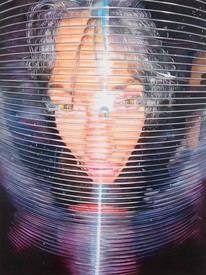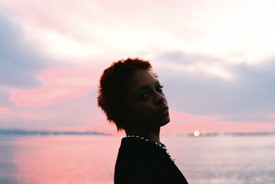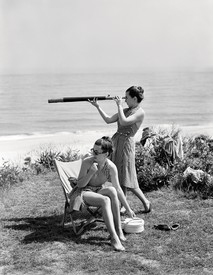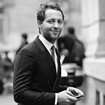
Derek Blasberg is a writer, fashion editor, and New York Times best-selling author. He has been with Gagosian since 2014, and is currently the executive editor of Gagosian Quarterly.
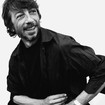
Pierpaolo Piccioli has been the creative director for Valentino since 2016. He attended the Istituto Europeo di Design in Rome before joining Fendi in 1990 to work on the brand’s accessory line. After Fendi, Piccioli began working with Valentino’s accessory department, later becoming the co-creative director in 2008. Photo: Inez & Vinoodh
Derek BlasbergWe’re supposed to talk about fashion and art today, which makes sense since the first time I’d seen you in eighteen months was at the Met Gala, which is essentially a fashion extravaganza in one of the world’s most important art museums.
Pierpaolo PicciolII had so much fun that night! I was happy to have Whoopi [Goldberg] and Carey Mulligan with me, and Normani and Janet Mock too. All of them were adding something to the whole experience. To me, it’s important when you go to this kind of event to set a table that reflects the values of what you want to stand for. If not, they’re just people sitting around. The big idea is that you can see the quality that I want to deliver with my collections. I feel that I’m giving them glamour and dignity.
DBThe incredible thing about that night, and the exhibition that it celebrates, is that you see fashion in a context of art. Yes, they’re dresses, but how incredible to see them among paintings and sculptures and other forms of artistic expression.
PPThere’s an incredible moment when you walk from the entrance to the dinner, and you’re going through the corridors full of Egyptian artifacts. I love to see this contrast between all these people and what they’re wearing and these incredible pieces of history. The museum feels alive and there’s a buzz in the air.
DBA few years ago, the theme was partly inspired by the vestments of the Catholic church, and one of your designs for Valentino was positioned among these incredible religious artifacts.
PPIt was beautiful because it was kind of alive, no? Like a new perspective, a new way to see both art and fashion.
DBWhen you were young, did you go to a lot of museums? What was your childhood exposure to the art world?
PPI grew up more inspired by the big churches, which are all over Rome. More than, say, art museums or galleries. When you walk into Santa Maria del Popolo, right there are these beautiful Caravaggios, The Crucifixion of Saint Peter and the Conversion of Saint Paul—true master paintings. You don’t have to buy a ticket or wait in line, you just walk in from the street. It’s like this all over Italy: I saw a lot of master paintings in many churches, like in Florence, Assisi. That’s probably why I feel that my culture and my identity are so closely linked to the master paintings from the early Renaissance and the late Middle Ages.
DBWhen you began to work in fashion, did you intentionally reference these influences? Or was it something more subconscious?
PPI didn’t deliberately think about it. However, for my first solo collection, when I had to reflect on my own aesthetic identity, I went back to that moment of art because it felt like the best way to represent my culture. I started with [Hieronymus Bosch’s] Garden of Earthly Delights, because it was from the Renaissance, but actually it could be like a psychedelic Renaissance, or something not really in the canons of the Renaissance. Those independent minds were very free minds.
DB It wasn’t easy for Americans to travel last summer, and one of the things I was sad to miss was the epic Valentino couture show in Venice, which was a mix of art references from both the old world—this is Venice!—and the new world in your collaborations with contemporary artists.
PPIt was totally different. When you talk about that kind of moment of art, the Renaissance and the late Middle Ages, you don’t think about beauty, you think about grace. Grace is not something close to the surface, it comes from inside, it’s a kind of light, a color of the skin, something radiant. When I was thinking about the show in Venice, I was thinking about how the collection could be graceful and radiant, especially in a city like that.
DBAnd then you were also inspired by contemporary artists. In total, you worked with seventeen artists on speciality commissions that informed garments that you created, right?
PPThe reason I wanted to be inspired by contemporary artists, as opposed to someone who created works 400 years ago, was this desire to connect with someone who was looking at this world in the same moment as I was. I didn’t want to go back to the past and translate a vision of past painters. I feel that fashion is not art.
DBIs that right?
PPSometimes someone will say fashion is art. Or, when something is beautiful, they will say, “This is art.” I don’t believe so. I feel that fashion is fashion and art is something different, because art exists for art’s sake.
DBWhereas fashion has a specific purpose?
PPYes, fashion has a purpose. It has to be related to the body, always. That said, I don’t think that bad art is better than good fashion.
DBHa, good point!
PPIt’s like having two different languages. The painter uses his or her own language, and fashion is my own language through which I can witness the moment I’m living. That’s the reason for art, fashion, writing, whatever. When you do creative work, you’re witnessing your moment. But you have to do it in your language. Mine is fashion. But I wanted to talk, so that’s what I did with these artists, trying to translate the same purpose into fashion, to synthesize their art into fashion. Most of them were painters, so we’re talking about two-dimensional artworks; I had to make them three-dimensional, which was like wrapping the body in some way. And then I also had to put in the couture way, applying the painting on top of the most beautiful couture coat. My issue was to concentrate with the same spirit as the artist, which is why I had a deep relationship with each of them, and tried to get not only to the surface and the colors and the techniques but also the spirit. I didn’t say, Paint anything on fashion. I worked with my own language instruments, which included embroideries and fabrics and accessories.
DBWas that the first time you were inspired by or collaborated with contemporary artists?
PPYes, because I don’t like when fashion and art work together in a way that’s only about surface. I didn’t want to have artwork for the set of the show. It’s like when you make music, you have different instruments, but together they have to create a harmony. That’s what I wanted to create, a harmony between all these voices together, that could become one collection of fashion.
DBWas it difficult to work with living artists? If you’re inspired by the Renaissance, all of those folks are dead.
PPHa! The process was relatively simple. Some of them I already knew. Some of them had been chosen by Gianluigi Ricuperati, a curator we worked with. When they came together, they were ready. They all had aesthetics from different countries, different identities, different cultures, and they all worked well together for some reason. The final dress came from a conversation with Jamie Nares. She’s kind of an action painter, because she uses her body, the strength of her body, to do these big strokes with big brushes. When I met Jamie, who is sixty-seven years old, I understood that her body was very important in her artwork, but it was even important in her personal life, especially at that moment. So when I started, I was going to translate these big strokes in a big epic pose. But then after meeting her, I thought it was more significant to do a very female dress, very feminine, with drama, with a cape. At the end, as a partnership, it was both professional and personal and much more meaningful.
Francis Offman, who is an African artist from Rwanda, feels that art has a social responsibility. He doesn’t buy his colors; his works take years to finish because he uses only natural elements. I said that I couldn’t do something that elaborate, so I wanted to reuse upcycled materials and I did a kind of jumpsuit, a worker uniform, which was close to the spirit of Francis’s work. Alessandro Teoldi is an Italian who works in New York. He does beautiful artworks that meld materials together. That’s why I decided to do the big red dress with old red materials from previous projects at Valentino.
PPYes, so it was about mixing the elements. In another look, I put the most expensive cashmere with the most humble cotton for the toiles. It was a way to give dignity to the humble material of everyday. It demonstrated that couture is not about the expensiveness of the fabrics but about the humans behind the work. Alessandro’s work was in a way very close to that kind of humanity that you see every day in couture.
DBYou can say the same thing about art: it’s not about the materials, it’s about what the artist does with them. Otherwise it’s just paint on a canvas.
PPExactly!
DBBeyond art, you’ve also been a huge fan of poetry. In 2019, the inspirations for your spring collection were four poets.
PPIn a way, it’s similar to the approach with the paintings. I’ve always been interested in the idea of language. Through language you can express your identity, your values, your ideas. Fashion is mine, but I feel that everyone has to have their own language. When you work together and keep the differences, melting together the different languages but keeping identities as they are, that can create a new perspective. It’s like having a new language we talk through and then we deliver the same idea. It’s the way of all ideas: you have to deliver your values, your style, your ideas, through different stories, but the message has to be more or less consistent and current, collection by collection, painting by painting.
DBI think the secret of your success at Valentino is how you take something precious, like old master paintings, and treat them casually, as if they were contemporary. One of my favorite Valentino shows was when you re-created all of these incredible artworks and photographs, but reimagined the heroines in them as Black women. That to me was such a major fashion moment.
PPI deliberately wanted to do a classic couture collection but worn by Black women because that was an idea that to me reflects the times. I wanted to ask, What if couture was born to celebrate these Black women? In the ’70s, magazines like Jet and Ebony were not allowed to borrow clothes from the fashion houses, so they had to buy them if they wanted to photograph the couture. So what if that imagery of couture, like Cecil Beaton’s beautiful swans, were repositioned, and we were celebrating the equality of beauty? I didn’t want to do any kind of exotic couture because sometimes that was the way designers used Black beauty. My idea was to shift the imagery of couture, the salon de couture with the flowers, ruffles, bows, all the clichés of couture, into modern Black women. I had the finale in my mind and then I went back and built a couture collection around it. When I had that feature very clear in my mind, it was actually the day after my previous couture, and it took almost four months to do the casting, to do everything.
DBThat show was a sensation. Everyone was so moved. Afterward I came backstage and Naomi Campbell was in tears.
PPBecause I’m very aware that fashion’s my language, I don’t think I have to add words to what I do. Fashion can be much stronger and much deeper than words. When you read a book, you imagine the characters, the landscape, the fiction of the book. When you see a movie, it’s impossible to go back to the book and have your own image because the image is already there. I feel that that image can be stronger than any words. You don’t have to add the word “equality,” the word “uniqueness,” the word “inclusion.” You don’t have to add the word when you have that kind of image.
DBI know you don’t think fashion is art, but will you agree that, like art, fashion can reflect what’s going on in the world?
PPYes, I feel that. If you’re an author, you have to witness your time. If your language is fashion, art, writing, poetry, whatever it is, you have to reflect your time and you have to witness your time. And you have to lead your time to change. Hopefully you have to lead the world to change. When you see the Black beauty salon or men and women sharing the same wardrobe, perhaps that’s not what it is right now, but that’s what it will be one day. You have to give the hope that it will be. You have to lead that change. I dream of a world without any barriers, any boxes where you fit people. I like fluidity of culture, of genders. You don’t need to be Black to say Black lives matter. You don’t need to be non-binary to stand for gender fluidity. You don’t need to be a woman to stand for women’s rights. I think if you stand for civil rights, you stand for all civil rights, and you stand for equality and freedom and humanity. Your work has to be a witness and to lead this change.
DBThat’s something that fashion and art have the power to do.
PPFashion has a power. As a designer, I want to deliver the values I stand for. I don’t want to deliver . . . a color. Or say how many ruffles are on this jacket. I’m not like that. I use beauty to make everything effortless, everything more direct and more emotional. Beauty is important to lead change. It’s like having two layers, one aesthetic, one emotional, and they have to collide together. It becomes superficial if you use only beauty.
My job at Valentino is about making this brand consistent and relevant for today’s generation, which means that it has to be relevant for a younger generation embracing values like my values of inclusivity, freedom, and equality without killing the values of the house, a sort of a craftsmanship mind, which is in the DNA of the brand. Lifestyle is about sharing surfaces, community is about sharing values. And that’s what I want to do.
Photos: courtesy Valentino
